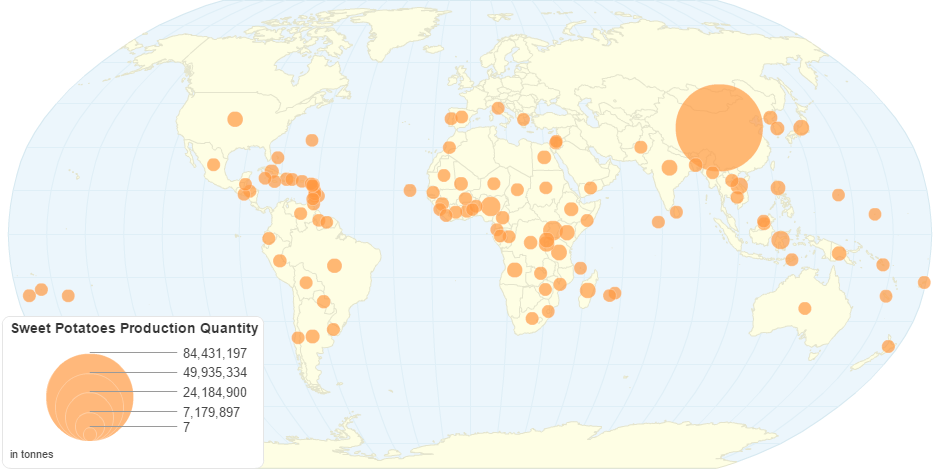This chart shows Sweet Potatoes Production Quantity by Country.
The sweet potato is a dicotyledonous plant that belongs to the morning glory family Convolvulaceae. Its large, starchy, sweet-tasting, tuberous roots are a root vegetable.In some parts of the English-speaking world, sweet potatoes are locally known by other names, including "yam" and kumara.The young leaves and shoots are sometimes eaten as greens.
The sweet potato is only distantly related to the potato and does not belong to the nightshade family Solanaceae, but that family is part of the same taxonomic order as sweet potatoes, the Solanales. The origin and domestication of sweet potato is thought to be in either Central America or South America.In Central America, sweet potatoes were domesticated at least 5,000 years ago.
Sweet potatoes are cultivated throughout tropical and warm temperate regions wherever there is sufficient water to support their growth.Due to a major crop failure, sweet potatoes were introduced to Fujian province of China in about 1594 from Luzon. The growing of sweet potatoes was encouraged by the Governor Chin Hsüeh-tseng.
Sweet potatoes became popular very early in the islands of the Pacific Ocean, spreading from Polynesia to Japan and the Philippines. One reason is that they were a reliable crop in cases of crop failure of other staple foods because of typhoon flooding. They are featured in many favorite dishes in Japan, Taiwan, the Philippines, and other island nations. Indonesia, Vietnam, India, and some other Asian countries are also large sweet potato growers.
Besides simple starches, raw sweet potatoes are rich in complex carbohydrates, dietary fiber and beta-carotene, while having moderate contents of other micronutrients, including vitamin B5, vitamin B6 and manganese.When cooked by baking, small variable changes in micronutrient density occur to include a higher content of vitamin C at 24% of the Daily Value per 100 g serving.
9 years ago

